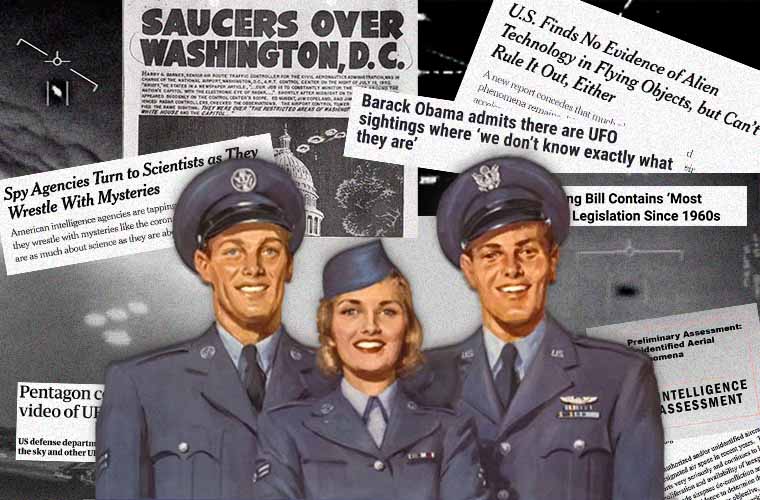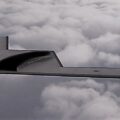“As we have said previously, the Department of Defense and all of the military departments take any incursions by unauthorized aircraft into our training ranges or designated airspace very seriously and examine each report.”
– DoD Spokesperson Susan Gough, July 27, 2020
Last June, the Director of National Intelligence (DNI) released a public report entitled Preliminary Assessment: Unidentified Aerial Phenomena. The report confirmed that vehicles of unknown origin and capability are operating on a recurring basis, with seeming impunity, in restricted U.S. military airspace. It also appears that in some cases these vehicles are maneuvering in ways that surpass not only U.S. aerospace capabilities but our understanding of physics. As U.S. Senator Martin Heinrich, a member of the Senate Intelligence Committee, said, “I don’t know what it is, but any time you have legitimate pilots describing something that doesn’t seem to conform to the laws of physics that govern aviation and is in U.S. airspace, I think it’s something we need to get to the bottom of.”
The DNI’s report cited 144 incidents since 2004 in which the U.S. military detected these enigmatic aircraft. Although OSD and DNI public affairs refuse to clarify, it is my understanding that the U.S. Air Force contributed very few, if any, of the 144 reports. If one or two USAF UAP reports did slip through, they are at best the exception that proves the rule. Otherwise, it was virtually all U.S. Navy reporting. Notably, in 80 cases multiple sensor systems simultaneously corroborated the presence of UAP.
How is this possible in light of the USAF’s global responsibility for aerospace defense and its massive air and space surveillance capabilities? Are we to believe that the USAF did not detect any Unidentified Aerial Phenomenon (UAP) from 2004 until 2021? This lapse in USAF reporting raises doubts about the credibility of the Air Force on the UAP issue and its responsiveness to civilian oversight.
I will present data below indicating that the Air Force and its component organizations actually detected thousands of UAP from 2004 through 2021. Admittedly, it is theoretically conceivable that none represented breakthrough Russian or Chinese technology–much less alien spacecraft–but the point is that we simply don’t know. That’s what makes them UAP.
This chasm between Navy candor and Air Force reticence is not the result of using different radar systems or monitoring different regions. It appears to be little more than the Air Force brass resisting civilian oversight of the UAP issue. This may seem harsh, but I don’t know what other conclusion to draw from the facts discussed below.
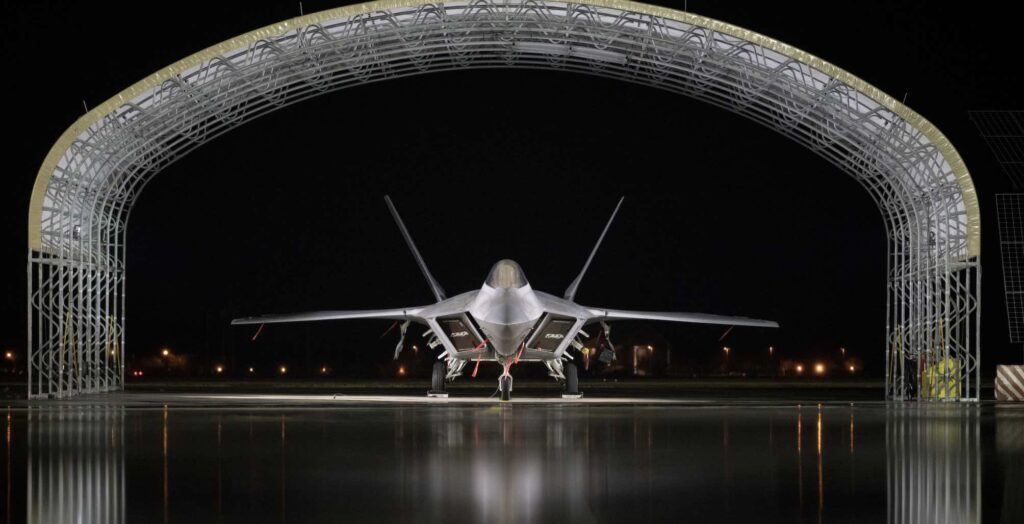
Let’s begin by briefly reviewing the massive extent of the Air Force’s air and space surveillance capabilities. The vast area, duration, and fidelity of USAF surveillance technology guarantee the collection of UAP data. The surveillance capabilities that the taxpayer has generously provided the Air Force are amazing, but no system, or even system of systems, is capable of correctly identifying everything in orbit or in the atmosphere. It is a shame that the public does not have a greater awareness of these incredible systems and the Air Force personnel who run them. Although I can’t do justice to the technology or personnel, I have attempted to describe some of the most notable systems and I’ve embedded a number of links below to make it easy to learn more.
After briefly reviewing the Air Force’s unclassified surveillance capabilities I’ll provide a number of specific examples of USAF UAP incidents that inexplicably remain unreported and unaccounted for. As we will see, there is no room for potential USAF claims of either ignorance (we don’t have any pertinent UAP data) or omniscience (we were able to identify everything we tracked). I’ll also discuss possible explanations for this foot-dragging and offer some suggestions for civilian policymakers charged with Air Force and Intelligence oversight responsibilities.
1) USAF Unclassified Surveillance Capabilities
a) The Space Fence: “The World’s Most Advanced Radar”
- The Space Fence tracks over 25,000 objects in orbit, some reportedly as small as a marble (see link above for more information).
b) The Solid State Phased Array Radar System (SSPARS, formerly BMEWS)
- While the powerful Space Fence searches for and tracks objects in space, North America is ringed by similar, massive, phased-array radars designed primarily to detect ICBM or sea-launched cruise missiles directed at the United States. The numerous UAP that the Navy has been encountering off the East and West coasts of the U.S. should be in view of these powerful, USAF-managed systems. Did none of these immense radars detect any of the UAP reported by the Nimitz Carrier Strike Group in 2004, or the dozens of UAP reported by East Coast F/A-18 fighter squadrons beginning in 2015? Are these massive radars missing what Navy ships and planes are seeing and, if so, why? As we will see below, we know there are instances where Air Force radars tracked high-flying and fast-moving UAP in the 1990s and before. Is there any reason to believe such events stopped altogether prior to 2004? The more apt question is: was any of the UAP information derived from the USAF’s SSPARS monitoring system shared with the UAP Task Force, the DNI, or Congress?
- I recognize that these radars automatically suppress information not related to targets of interest in order to reduce clutter. Still, it seems inconceivable that the most powerful emitters on the planet did not detect a single UAP over such vast areas at any time since 2004! If these radars are not contributing information needed to help track these objects that too is important information for policymakers evaluating the costs and benefits of these huge systems at a time of rapidly changing threats and detection requirements. If these radars are so heavily filtered that they did not detect the objects swarming the USS Omaha and USS Russell off the coast of California in 2019, then perhaps it is time to modify the filtering algorithms of these radars or perhaps feed the same radar data in real-time into a separate filtering process tailored to detect and assess these new potential new threats. Otherwise, we risk needlessly missing vital intelligence information.
- The government needs better intelligence regarding the emerging pattern of UAP incidents involving overflights of U.S. warships, Air Force bases, and nuclear power plants. Good examples of what I am referring to can be found in a series of excellent, highly-detailed articles in The War Zone, including intrusive ‘drone’ overflights of a critical long-range anti-missile system in Guam undoubtedly of keen interest to China.
- Unmanned aircraft undeniably pose a serious and growing national security challenge. In 2019, a number of relatively unsophisticated drones launched by a Yemeni rebel group penetrated Saudi Arabia’s sophisticated air defense system, causing damage that resulted in the temporary loss of 50% of Saudi refining capacity. In 2020, Turkish drones figured prominently (perhaps even decisively) in Azerbaijan’s rout of Armenian forces. For these and other reasons, it has become essential to be able to assess the effectiveness of SSPARS and other radar systems with regard to drones and UAP.
c) The Global Infrasound Acoustic Monitoring Network
- This system is comprised of 60 stations in 35 countries that monitor low-frequency pressure waves in the atmosphere. Although built for the purpose of detecting nuclear explosions in support of the Comprehensive Test Ban Treaty, this acoustic network reportedly has the ability to detect and track bolides and other objects transiting the atmosphere. Some recent reports indicate this system also has the ability to monitor North Korean missile launches. I’ve even heard claims from scientists that the infrasound network detected UAP entering the Earth’s atmosphere and maneuvering at high speeds. Did the Air Force contact those running the global infrasound network to inquire about UAP detection? Inquiries should be made to determine whether this unique capability can contribute to the U.S. government’s understanding of UAP.
d) The U.S. Space Surveillance Network
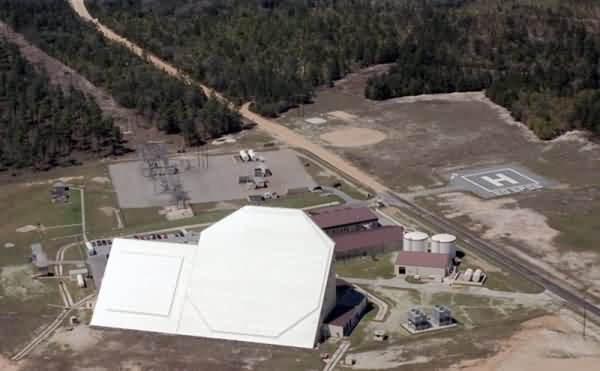
- This global program consists of at least 29 distinct worldwide space surveillance systems, featuring the world’s most powerful radars, including those in the SSPARS discussed above and others such as Site C-6 at Eglin Air Force base which can reportedly detect a basketball-sized object 22,000 miles away.Another important component of the integrated space surveillance system is the DARPA Space Surveillance Telescope (SST), capable of rapidly scanning large regions of space and monitoring distant and fast-moving objects such as asteroids. The impressive SST holds the world record for distinct observations in a single year, logging 6.97 million observations in 2015.Other notable systems on the network, some of which are known to have acquired UAP data include the ground-based optical GEODSS space surveillance system (which detects “uncorrelated targets”), the Geosynchronous Space-Based Situational Awareness Program (GSSAP), and the Navy’s stunning sea-based X-band radar system. The Combined Space Operations Center (formerly the Joint Space Operations Center) at Vandenberg Space Force Base, and the Space Control Center at Cheyenne Mountain, are both repositories of data from this formidable Space Surveillance Network. Again, even though they are largely focused on space rather than the atmosphere, these systems are also used to detect sea-launched cruise missiles. Given the capabilities of these systems, some must have detected UAP during the lengthy period in question (2004-2021).
e) The Space-Based Infrared System (SBIRS)
- SBIRS is a network of satellites operating in medium-earth, highly elliptical, and geosynchronous orbits that together provide continuous global coverage of infrared energy sources. Originally designed to detect missile launches, and later aircraft, this highly sophisticated capability continues to evolve and improve. Not only are the satellites improving in terms of reliability and resolution, but new algorithms and other techniques are improving the sophistication and ground-based exploitation of SBIRS data. This work is being undertaken at the Air Force’s “Overhead Persistent Infrared Battlespace Awareness Center” at Buckley Air Force Base as well as its new “Data Utilization Lab.” Although UAP typically lacks exhaust plumes or strong heat signatures, there are numerous reports in the open-source literature claiming that the SBIRS system has recorded unidentified objects that entered Earth’s atmosphere then maneuvered, changed direction, or departed. Again, did the Air Force even bother to check with the SBIRS program office or SBIRS analysts before responding to Congress’ request for UAP data? It also beggars belief to suggest that UAP were detected by SBIRs but no records were kept. If the operators are not keeping such records how can they learn from experience to improve the system? Are the infrared satellite data libraries at the Overhead Persistent Infrared Battlespace Awareness Center at Buckley Air Force Base, or the new SBIRS Data Utilization Lab, being queried for UAP data? I clearly recall a prominent unexplained infrared detection incident back in the nineties when I was still in the government. I find it hard to believe there have been no similar events since 2004.
- Even if all UAP events were filtered, a dubious scenario, isn’t it worth making inquiries to these organizations? What about undertaking searches of SBIRS’ vast databases to look for unique signatures that might have been detected during known UAP incidents off the East or West coasts of the U.S.? Has any effort been made to see if there are correlations between aircraft or missile launches from Chinese or Russian military facilities or naval vessels and the subsequent appearance of UAP over U.S. ships and facilities?
f) Active Electronically Scanned Array (AESA radars)
- In addition to the Navy’s Aegis radar systems, any military platform outfitted with a modern AESA radar is a potentially valuable source of information because they can track even low radar-cross section UAP over large areas. New policy guidance concerning UAP encounters will hopefully cause more pilots of AESA equipped aircraft to collect and report UAP data. Retroactive analysis of AESA data is also feasible, although I don’t know how long this information is stored, or how well it is indexed. Regardless, kudos to the DoD for issuing new guidance to report rather, than disregard, such incidents.
g) The Federal Aviation Administration
- The FAA’s long-range radar systems feed NORAD and the USAF through the Joint Surveillance System. NORAD is privy to all of the data from FAA sites. So, what about all the FAA UAP reports submitted to NORAD between 2004 and 2021? Why were none of these incidents reported to the UAP Task Force or Congress by the Air Force?
h) Other Surveillance Systems
- The powerful systems identified above provide mountains of surveillance data daily, but this list is incomplete. The black budget for Intelligence, DoD, and DOE programs is well above one-hundred billion dollars per year. However, even if we had no classified systems to buttress the many powerful collection systems identified above, the Air Force must have collected pertinent data from 2004 to June of 2021. Where is the data and why is it taking so long to produce?
- It is also worth noting that in addition to the 144 UAP incidents identified in the DNI’s Preliminary Report, civilians reported tens of thousands of UAP to civilian organizations like the Mutual UFO Network (MUFON) during the same period, often with photos or video. Further, hundreds of commercial airline pilots reported seeing UAP. How likely is it then that no USAF pilots encountered UAP during the same period?
With this thumbnail sketch of the USAF’s unclassified surveillance capabilities behind us, let’s examine specific incidents that demonstrate USAF awareness of UAP incidents from 2004-2021. Presumably, all these incidents will be accounted for in the next public UAP report required by law pursuant to the Gillibrand amendment. Clearly, the Air Force has a great deal of pertinent information that still needs to be provided to the “Airborne Object Identification and Management Synchronization Group” (the successor to the original UAP Task Force) or to Congress.
2) Specific Reasons to Doubt the USAF Claim Regarding UAP
a) Joint Navy and Air Force Training
- For years the Air Force and Navy have conducted airborne exercises in the same restricted areas off the East Coast of the U.S., known to aviators as “W-72a” and “W-72b.” Curiously, while Navy F/A-18s have reported dozens of UAP incidents in these areas since 2015, the USAF would have us believe that its F-22 pilots, notwithstanding their superior sensor systems, failed to detect even a single UAP in the same areas! This might be explicable if the Navy was detecting highly classified assets from the USAF or a U.S. intelligence agency, but the UAP Task Force reportedly checked with the appropriate security officials and received assurances that was not the case. Members of the oversight committees are already cleared for most classified DoD programs and some are cleared for all of them, so there would have been no need to mislead Congress. The UAP Task Force also found no evidence to suggest any of the 144 UAP it identified were Russian or Chinese. Is the UAP stigma so strong in the Air Force that its pilots are afraid to report potentially vital national security information? As DoD itself acknowledges, these UAP could be some form of new Russian or Chinese technology. For that reason alone it is critical for Air Force pilots to report such aircraft when they detect them, yet that seems not to have been happening.
- If stigma is the problem, rather than the limits of its technology, then the apparent lack of Air Force pilot and radar operator UAP reporting suggests a dangerously dysfunctional culture that is effectively blinding our personnel to potential new threats. Alternatively, were UAP reports submitted by pilots and others, but withheld because the Air Force is inappropriately concealing the information; perhaps within a waived Special Access Program that permits it to withhold information from all but eight members of Congress? Or, was the Air Force leadership simply being disingenuous by collecting such information but assigning a different label to it such as “Uncorrelated Targets,” rather than “UAP?”
b) Press Reports Regarding the USAF and UAP
- On October 25th, 2017, the FAA detected an unidentified aircraft flying “fast” (relative to commercial air traffic) at around 35,000 ft over Northern California towards Oregon. In an effort to identify the aircraft, the FAA contacted commercial airline pilots in the vicinity who visually confirmed a white object traveling northbound at around 35,000 ft. After the commercial passenger jets confirmed the position of the mysterious vehicle, NORAD scrambled F-15Cs from the 142nd Air Wing in Portland, Oregon to investigate. Bearing the most advanced targeting system available (the so-called Sniper pod), these F-15s were unable to locate–much less identify–the vehicle. FAA and NORAD both confirmed the event and NORAD publicly confirmed the launch of the F-15s. Was the Air Force or CIA or a contractor perhaps flying a classified aircraft at altitude near commercial air traffic without a transponder? Conceivably, but flying secret aircraft near commercial air traffic lanes is potentially dangerous and therefore contrary to standard practice. Also, stealthy aircraft are designed to be virtually undetectable, typically black like the SR-71, F-117, and B-2 bomber rather than white like this unidentified aircraft. In fairness, the aircraft did not exhibit the instantaneous acceleration or hypersonic speeds so often characteristic of UAP, so a conventional explanation is certainly possible. Nevertheless, this is a clear example of a known UAP incident in the 2004-2021 time frame that the Air Force did not report.
- In another case, American Airlines confirmed in March of 2018 that one of its jets reported seeing an unidentified object while flying over Arizona. The FAA promptly contacted another jet aircraft in the vicinity, and that pilot also confirmed the sighting. NORAD monitors these transmissions and should have been aware of this incident in real-time. Regardless, NORAD logs FAA reports of UAP incidents. The fact that the vehicle did not appear on FAA radars could simply be evidence of a radar cross-section too small for civilian radars, but it was nevertheless an officially reported FAA UAP incident.
- Again, we have to wonder how many similar incidents have occurred since 2004 and why the Air Force did not report them. Those interested in further information regarding the issue of FAA and commercial airline UAP reports may try contacting the National Aviation Center on Anomalous Phenomenon (NARCAP). NARCAP was established by former NASA scientist Dr. Richard Haines in 1999, primarily due to his concerns regarding UAP and aviation safety. It should be easy for the oversight committees in Congress–and even easier for the DepSecDef and DNI–to find out why the Air Force did not report these and other publicly acknowledged UAP incidents.
c) NORAD
- Historically, innumerable UAP incidents are known to have occurred at or near SAC bases and Air Force ICBM launch sites. A prominent case discovered through the examination of declassified documents reveals that on September 20, 1957, NORAD radars detected two UAP operating at extreme altitudes and hypersonic speeds on a track that appeared aimed directly at the headquarters of the Strategic Air Command (SAC). The White House was alerted of a possible first-strike nuclear knockout attack, and U.S. nuclear-equipped bombers were reportedly launched. How many other NORAD incidents have occurred involving objects which displayed hypersonic speeds, instantaneous acceleration, or other telltale UAP behavior? What was exceptionally bizarre about this case, and seemed to contradict possible atmospheric or other explanations, is the fact that the UAP reportedly transmitted the proper response to the ‘Identification Friend or Foe’ (IFF) signals it received!
- A few years ago, in support of the History Channel show Unidentified, I had the pleasure of interviewing a retired USAF colonel who had served as NORAD’s Vice Director of Operations. James D. Cobb, Col, USAF (Ret) told me he arrived at work one day in the late 1990s to find nearly everyone in the NORAD tracking center standing and staring at the huge screen portraying air activity over North America. Jim and his colleagues watched in rapt fascination as the map displayed a UAP coming toward the U.S. at high speed and high altitude (though not a ballistic speed or trajectory) from a remote region in the arctic. As it approached the U.S., the NORAD commander issued clear and simple directions: “I want that thing!” Minutes later, USAF jets on strip alert in the Eastern U.S. were launching to intercept the UAP as it proceeded southward. The UAP continued all the way down the East Coast of the United States, easily outrunning the fighters sent to intercept it. Eventually, it veered off toward Cuba and was lost to sight as it progressed further south out over the Atlantic.
- Another source of useful NORAD data comes from the inquiries launched in the wake of the terrorist attacks of September 11th, 2001. During the subsequent Congressional investigation, I had a chance to review NORAD data on unidentified tracks. I recall being deeply impressed by NORAD’s ability to track millions of aircraft flying over North America each year. As I recall, less than one-half of one percent of the UAP remained unidentified after NORAD concluded its investigations. While I don’t precisely recall the percentages, I recall that this still resulted in hundreds of unresolved tracks each year. Moreover, those figures were only for aircraft only, not unknowns detected on-orbit or elsewhere in space.
- Subsequent inquiries regarding space-tracking revealed far larger numbers of UAP. I learned NORAD catalogs thousands of unknown objects in orbit, mostly thought to be small items of debris from satellites that had been purposefully or accidentally destroyed while in orbit. No doubt, the overwhelming majority of these unidentified air and space targets have simple, conventional explanations. Often the initially unidentified aircraft turn out to be small private planes with inactive transponders, dense flocks of migrating birds, space debris, or other innocuous phenomena. Few would suspect most NORAD UAP are exotic aircraft. However, even a single confirmed instance of an unknown maneuvering object entering and departing the Earth’s atmosphere from space would be transformational.
- In 2015, NORAD released documents indicating an average of 1,800 annual unidentified “Tracks of Interest” since 2010. Some may have been subsequently resolved after additional analysis, but at a minimum, there are still typically dozens of NORAD “Remaining Unknowns,” (REMs) at the end of each year. How does this square with the USAF’s inability or unwillingness to provide relevant information about UAP from 2004-2021? Are we supposed to believe that the USAF subsequently found explanations for all 9000 UAP during this five-year period, and each and every one of the thousands that have occurred since 2015?
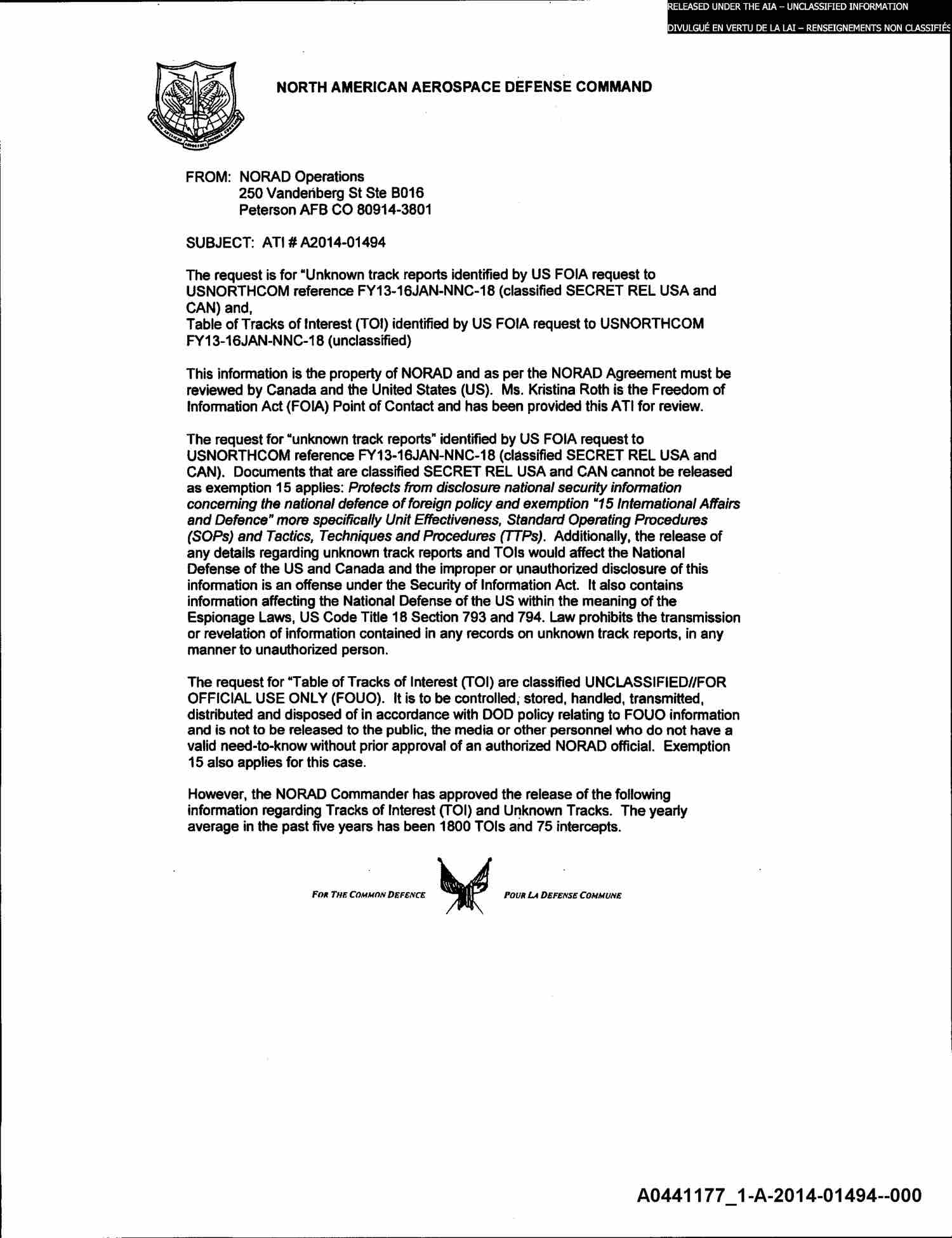
- It would be fascinating to know what patterns NORAD’s Pathfinder AI program may have identified among the thousands of incidents of known unknowns identified by NORAD.
- I recall once in the 1990s when a fellow staffer on the Senate Select Committee on Intelligence (SSCI) traveled to the Maui Optical Tracking facility, part of the Air Force Space Surveillance Network, to perform an audit. Before he left, I casually asked, “Hey Pete, as long as you’re out there, why not ask them if they ever see anything inexplicable or bizarre?” I was self-conscious about using the term “UFO” but my colleague knew what I meant. A week or so later he called saying that he asked the question and, wouldn’t you know, just a few months earlier they had recorded four to five fiery unidentified objects flying over the ocean parallel to the horizon. I circulated the unclassified video among committee members and staff and it eventually appeared on Ted Koppel’s famous nightly news show Nightline. Notably, that UAP video was obtained by a single staffer randomly asking a single question at a single Air Force facility decades ago when U.S. air and space monitoring capabilities were far less extensive than they are today. What are the odds, then, that no such events were subsequently recorded at any Air Force facility from 2004 through 2021? I should think the answer is slim to none.
d) Canadian NORAD Documentation
- NORAD is a combined U.S.-Canadian command. The commander is always an American and his deputy a Canadian. However, although NORAD is exempt from FOIA requests by U.S. citizens, it is not exempt from requests made by Canadian citizens. Consequently, Canadian researchers have been able to obtain a plethora of documents that reveal numerous UAP incidents that were reported to NORAD and therefore to the U.S. Air Force.
- Sometime after the UAP issue surfaced on the front page of the New York Times in December 2017, I did an interview with Canada’s CTV, and afterward exchanged some information and leads. I learned that the Canadian Air Force has had a procedure for reporting unidentified ships and aircraft since 1953. Canadian researchers have also determined that UAP reports over their country are shared with U.S. NORAD forces. As one Vice News article states:
- “CIRVIS (Communications Instructions for Reporting Vital Intelligence Sightings) reports should be made immediately upon a vital intelligence sighting of… objects or activities which appear to be hostile, unidentified, or engaged in possible illegal smuggling activity.” It even puts “unidentified flying objects” at the top of a list of examples such as “submarines or warships which are not Canadian or American.”
- With that in mind, here is an example of a joint military-civilian UAP incident that occurred along the U.S.-Canadian border last July. Quoting from Vice:
- “On the night of July 30, a Canadian military and a KLM Royal Dutch Airlines flight reported a UFO over the Gulf of Saint Lawrence. According to an aviation incident report posted on the night of Aug. 11, both flights “reported seeing a bright green flying object” that “flew into a cloud, then disappeared” in a stretch of open water between Quebec and Newfoundland. The KLM passenger flight (KLM618) was traveling from Boston to Amsterdam while the Canadian military transport aircraft (CFC4003) was flying between CFB Trenton, a base in Ontario, and Cologne, Germany.”
- Canadian reports indicate NORAD was promptly notified. The Air Force therefore should be aware of this incident and many other incidents involving Canadian military and commercial aircraft.
- A couple of other examples:
- On the morning of May 30, 2016, an Air Canada Express flight from Montreal to Toronto reported it had “crossed an unidentified flying object, round in shape, flying at an approximate speed of 300 kts,” or more than 550 km/h. Also, over 8,000 feet above Lake Ontario on Nov. 14 of that year, two crew members were injured when a Porter Airlines plane dove to avoid hitting an “object” that “appeared to be solid… and shaped like an upright doughnut or inner tube.
- An example of an official report of a UAP incident submitted to NORAD that occurred over the Northwest Territories on April 20th, 2018 can be found here.
Why would NORAD and the Air Force neglect to share these UAP reports with the UAP Task Force, the DNI, and Congress?
- What prevented the Air Force from forthrightly conveying the nuanced truth of the matter as the Navy did instead of stalling the UAP Task Force and civilian policymakers? If nothing else, what would have been wrong with at least providing the UAP Task Force an interim statement like the following:
‘The Air Force and NORAD have not been using the terms UAP or UFO for record-keeping and therefore do not have records that are necessarily responsive to your request. However, since NORAD tracks millions of aircraft flights annually; and tens of thousands of items in orbit (mostly small pieces of orbital debris), there are inevitably circumstances in which some objects or tracks cannot be identified. We invite members of the UAP Task Force to visit our air and space tracking facilities for briefings and to review the available data and draw their own conclusions.”
I’m flummoxed by the USAF’s lack of responsiveness, but I’m also at a loss to understand why the UAP Task Force, the Deputy Secretary of Defense, and Congress passively accepted the Air Force’s foot-dragging rather than challenging it. Deputy Secretary of Defense Kathleen Hicks and DNI Avril Haines are both honest, highly accomplished, intelligent, and hard-working public servants. So are the members and staff of the Congressional oversight committees. So how did the Air Force manage to sell such a palpably implausible claim to these sophisticated audiences? How can we resolve the glaring contradiction between the Air Force’s amazing surveillance capabilities and its seeming total lack of reported UAP data?
3) Immune to UAP Oversight?
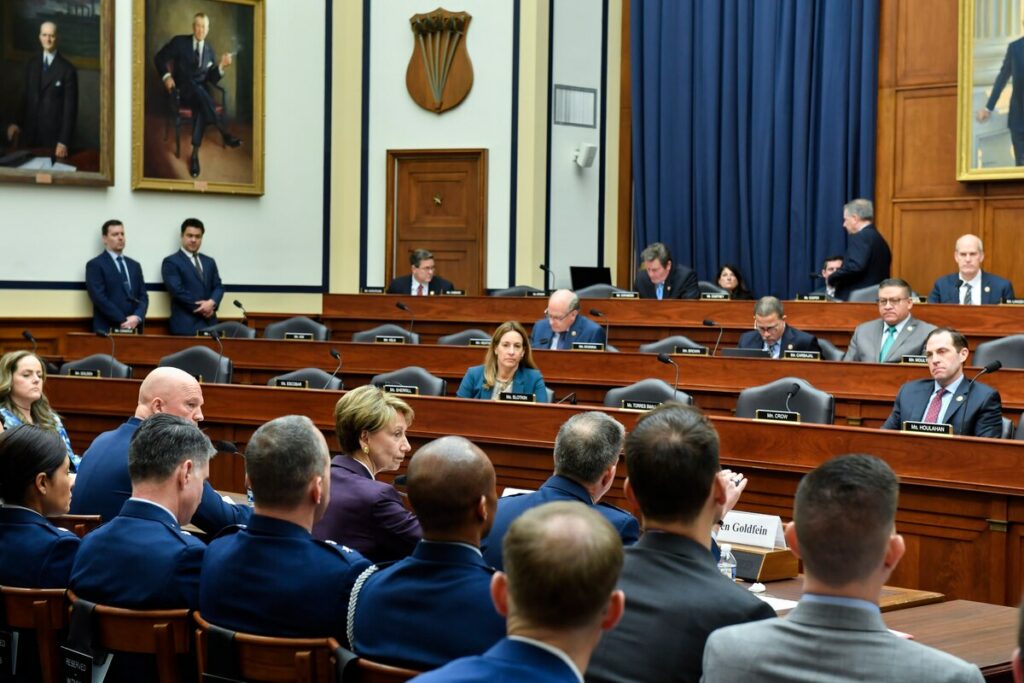
I have a theory, about which I would like to be wrong, that the Air Force is so accustomed to a lack of civilian oversight on UAP issues that it hardly takes such oversight seriously. Perhaps civilian policymakers are also so accustomed to blanket USAF denials regarding UAP that they don’t think to challenge the Air Force any longer.
The UAP issue and UAP reports became a topic of serious public and government concern after WWII. The board of one of the early civilian UAP investigatory organizations established in the 1950s, the National Investigative Committee for Aerial Phenomenon (NICAP), included retired former admiral and CIA Director Roscoe Hillenkoetter and RADM Delmer Fahrney USN (Ret.), former chief of Navy missile programs. Admiral Fahrney expressed the view that some UAP were far too advanced to be Soviet systems. UAP author and activist Donald Keyhoe, Maj. USMC (Ret.) served as the NICAP Director.
In the early post-war years America’s mainstream media also routinely covered the UAP issue. For example, the incredible UAP flyovers of the nation’s capital on two consecutive weekends in 1952 generated screaming block letter coverage in the Washington Post and newspapers across the country. These events produced a bustling DC press conference and prompted the White House’s Intelligence Advisory Committee to form a study group led by distinguished physicist Howard Robertson. The eponymous “Robertson Panel” concluded that:
- A public education campaign of debunking should be undertaken to reduce public interest in the UFO (UAP) subject, thus
- Minimizing the danger of overloading Air Defense systems at critical times; and
- Civilian UFO (UAP) groups should be watched
It now appears that these recommendations were fully implemented and wildly successful. Admittedly, in terms of discrediting the UAP issue, the U.S. government had plenty of assistance from a variety of zany UAP charlatans who made outrageous, unsupportable claims. However, the issue goes well beyond that. The most serious effort to investigate UAP during this period, the Air Force’s Project Blue Book, came to be regarded by its own chief scientist Dr. Allen Hynek as little more than an “unscientific” effort to “debunk” the UFO phenomenon.
Project Blue Book was terminated in 1970 after the release of a controversial government-sponsored report on UAP, the Condon Report, which concluded that UAP warranted no further investigation. This is not the place to discuss the Condon report’s many flaws and controversies, or the disconnect between the report’s data and conclusions, but the report did provide the basis the Air Force sought to end Project Blue Book.
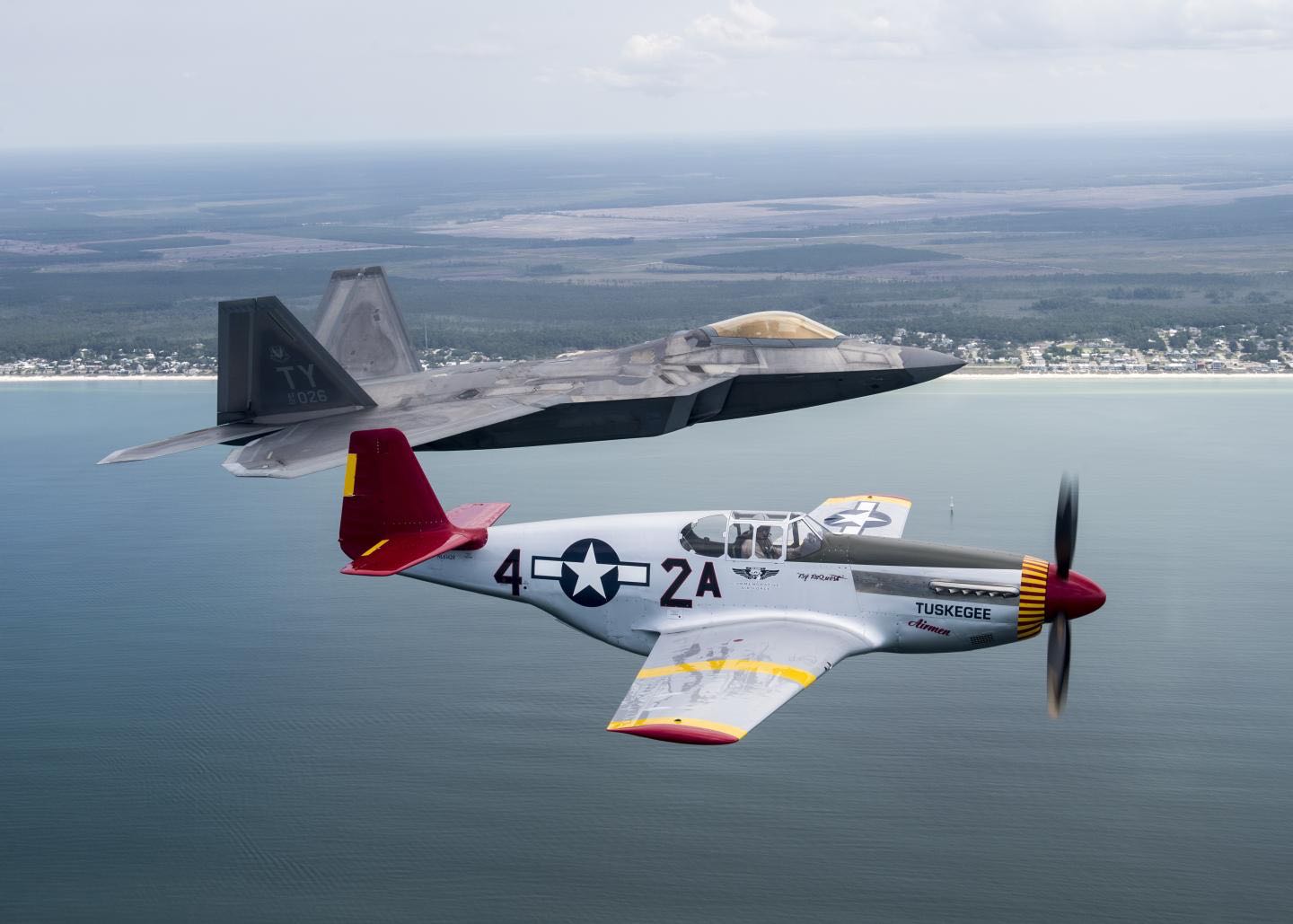
There was no further official U.S. government public involvement or interest on the part of any Administration until the Senate Select Committee on Intelligence requested an unclassified report in the 2020 Intelligence Authorization Act. True, Senator Reid of Nevada and a few colleagues confidentially earmarked funds for UAP research in 2007; but the funds were only used to hire a contractor to examine the UAP issue at a mostly unclassified level and that effort had no support from the Pentagon or the Air Force and seemed to have had little if any lasting impact (with the very important exception of putting the UAP bone between the teeth of Pentagon official Lue Elizondo who played an indispensable role in publicly surfacing the UAP issue in 2017).
During this half-century interregnum between the end of Project Blue Book and the Senate Intelligence Committee’s request for a public UAP assessment, the Air Force denied any interest in the UAP topic. Yet, there are many reasons to doubt these claims. For example, retired USAF special agent Richard Doty has repeatedly claimed, consistent with the Robertson Panel’s recommendations, that the Air Force Office of Special Investigations (OSI) conducted clandestine surveillance of U.S. citizens and forged documents to manipulate and discredit such groups during the 1980s. At least one UFO researcher, Bill Moore, admitted spying on his civilian colleagues on behalf of OSI.
In addition to passing information, Moore also claimed that OSI Officer Doty and two of his Air Force OSI colleagues were preparing and feeding disinformation to civilian UAP researchers in an effort to discredit them. There are other examples of clandestine U.S. government activities targeting UAP researchers during this period, including efforts to intimidate and discredit UAP researchers Leonard Stringfield and Paul Bennewitz.
None of these sensational allegations of unlawful espionage and covert action directed against U.S. citizens has been investigated by Congress even though preventing this kind of abuse of U.S. citizens by their own government was the principal reason for establishing the Congressional intelligence oversight committees in the first place. Had the targets of these alleged activities been members of the ACLU, reporters from major media outlets, academicians, or members of Congress, I suspect public outrage would have ensured some form of investigation.
I frankly cannot help wondering if there isn’t still an active USAF hidden hand that is concealing UAP data. The deck logs of the USS Princeton for the short period of the Nimitz incident in 2004 are strangely missing from the National Archives. Who removed them? Additionally, the last known location of the USS Princeton’s missing radar data was reportedly Langley Air Force Base. Some sailors aboard the Princeton claim that the ship’s radar data was removed by civilian officials and/or USAF officers who came aboard the Princeton via helicopter shortly after the famous “Tic Tac” UAP incident. Why is this invaluable radar data still missing?
The stigma surrounding the UAP issue also seems to have deterred Congress from asking the USAF about the validity of astonishing but credible claims of UAP interference with U.S. nuclear command and control systems! As recently as last October, the latest in a series of press conferences was held by honorably discharged USAF officers who reiterated these shocking claims and their request for a Congressional inquiry. In fact, efforts by retired USAF officer Robert Salas and others to draw attention to this sensational issue date all the way back to the 1980s, yet there is no evidence of Congressional interest. Why ignore the testimony of Robert Salas and other former USAF personnel and the FOIA documents they have produced in support of their claims? Or the evidence amassed by author Robert Hastings in his rigorously researched book, UFOs and Nukes? What could be more grave or significant than potential interference with U.S. nuclear command and control? Yet, decades pass, and the Air Force continues to escape accountability on this issue.
Oversight of intelligence and military activities in a democracy is always a delicate balance. In some areas we have excessive oversight and regulation; in other areas virtually none. However, when it comes to UAP, until recently we’ve clearly erred on the side of none. Today, after a half-century of immunity from UAP oversight, it is hardly surprising to find the Air Force unresponsive to current civilian requests for UAP information.
4) A Pattern of Contempt for Civilian Oversight?
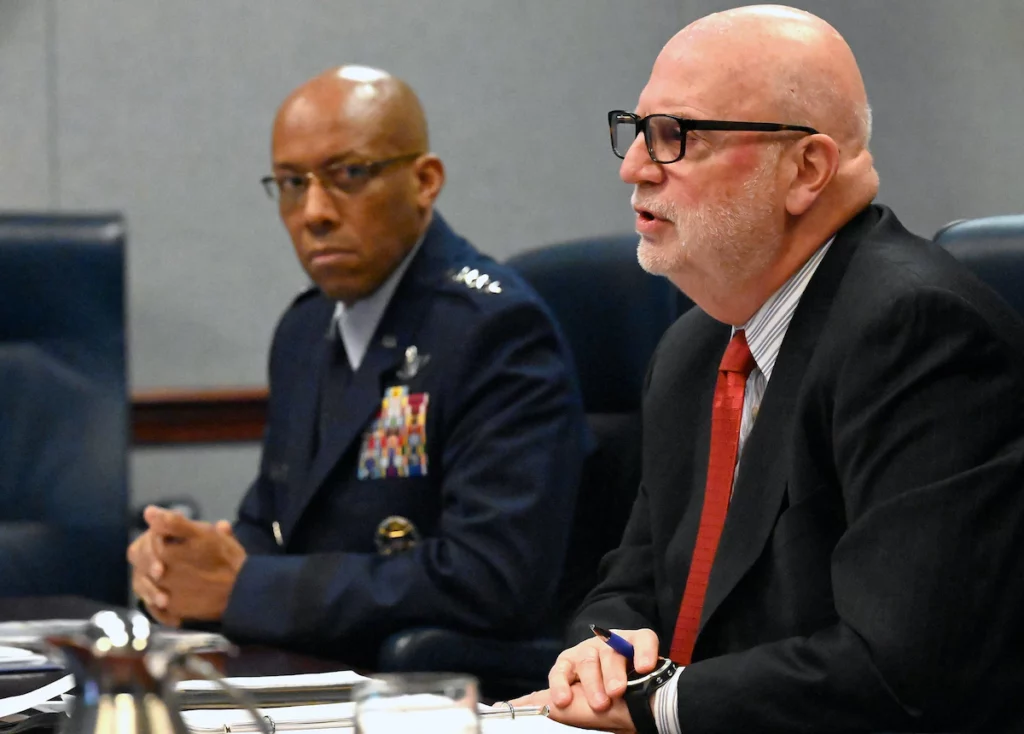
USAF resistance to civilian oversight has not been limited to the UAP issue. While staffing Senator William Cohen’s bill to create the U.S. Special Operations Command (SOCOM) in 1985, the Senator and I, at our respective levels, worked patiently to obtain the co-sponsorship of the renowned Chairman of the Senate Armed Services Committee, Senator Sam Nunn. After several months passed, Senator Nunn finally agreed to cosponsor Senator Cohen’s SOCOM bill. I was thrilled but also curious so I asked Senator Nunn’s staff what caused the revered defense expert to change his mind.
The Senator’s staff explained that the Armed Services Committees had earmarked funds to fix DoD’s dire lack of airlift for U.S. Special Operations Forces (SOF), only to later learn that the Air Force had reprogrammed all the funds intended for SOF airlift to purchase F-16s! The USAF did this despite the recent tragic failure of the “Desert 1” rescue attempt in Iran in 1980 and the fact that the Air Force had over 550 F-16’s but only a few aging helicopters with the long-range, night-flying capability required to support SOF components. However, even that wasn’t enough to push the usually calm and conservative Senator over the edge. Senator Nunn’s frustration boiled over when the USAF ignored direction from Congress again the following year notwithstanding strong direction from Congress in the annual Defense Authorization bill! At that point, the Senator concluded that if Congress wanted to see more airlift for the Special Operations Community it was going to need to establish a four-star SOF command that could effectively advocate the interests of that community from within the Defense Department.
This SOF airlift story is old but it is not clear much has changed. For example, press coverage suggests Air Force neglect of Congressional concerns regarding Space security issues contributed to Congress’ decision to remove space missions from USAF control and transfer them to the newly created U.S. Space Force.
Last summer I met with a number of DoD Inspector General officials concerning their inquiry into the manner in which DoD has handled the UAP issue. When I mentioned the fact that I’d heard members of the UAP Task Force were having trouble obtaining cooperation from the Air Force, one of the IG officials told me, “The Air Force is always that way for some reason. In my experience, they are not only the least cooperative but also the least competent program managers.”
Obviously, that is a generalization; but it came from a responsible DoD IG official who had been conducting audits of DoD organizations for over a decade. More to the point it seems clear that the Air Force has been less than fully responsive. Evidence of this is apparent from an oblique but embarrassing passage in the DNI’s UAP report to Congress which states: “The UAPTF is currently working to acquire additional reporting, including from the U.S. Air Force (USAF)…” Nearly ten months after the order was given by the Deputy Secretary of Defense the UAP Task Force was still waiting for USAF data?
Isn’t submitting a preliminary UAP report to Congress without USAF data rather like submitting a preliminary report on Russian nuclear submarines without U.S. Navy data? True, there is a hopeful sign, as the report also states: “Although USAF data collection has been limited historically the USAF began a six-month pilot program in November 2020 to collect in the most likely areas to encounter UAP and is evaluating how to normalize future collection, reporting, and analysis across the entire Air Force.” Was the UAP Task Force report suggesting it can’t get any retrospective USAF UAP data for the period 2004 through 2021? How can a meaningful USG report on UAP, even a “Preliminary” report, be produced without the full cooperation of the Air Force, the service principally responsible for aerospace defense of the United States?
There are other recent allegations of USAF resistance to sharing UAP information. I understand that USAF personnel have been warned not to directly approach the UAP Task Force (or its successor) with UAP information but instead to take any UAP reports to the USAF’s National Air and Space Intelligence Center (NASIC). Other reports suggest the Air Force has been cracking down on its personnel’s participation in classified chat rooms where the UAP topic is discussed.
5) Questions that Need to be Asked
Congress and the public should be shocked that in the digital age, when our smartphones can answer most questions in seconds, the Deputy Secretary of Defense, the DNI, and Congress cannot get straight answers about UAP from the Air Force many months after establishing a task force solely for that purpose! What does that say about civilian oversight of the Air Force or the effectiveness of tens of billions spent on digital information systems designed to support senior decision-makers by providing a “common operational picture” and “dominant battlespace awareness?” I find this level of bureaucratic dysfunction shocking.
Are America’s senior civilian officials too busy, too timid, or too embarrassed to confront the USAF with tough questions? Is it possible that they actually don’t want to know the truth? Although some politicians still fear having association with the UAP issue, against whatever political risk they perceive they must now weigh the risk of looking naïve or incompetent for accepting evasive responses from the Air Force.
Thankfully, some courageous and diligent elected officials, most notably Senators Rubio, Gillibrand, Warner, Heinrich and Blunt, and Representatives Gallego and Burchett, seem unafraid and determined to learn whether these objects pose a potential threat to U.S. forces. It is quite possible that the “drones” that have been swarming U.S. Navy ships, and critical facilities like the THAAD missile battery in Guam, and a nuclear power plant in California are reconnaissance operations undertaken by China or some other potential adversary. If so, those in oversight positions who ignored these reports may come to regret their inaction. The press and public would understandably be outraged that so little was done after so many warnings and so much evidence. Therefore, against the fear of being taunted for engaging on the UAP issue, members must now consider the potential embarrassment of looking inept and naïve for not demanding answers that might have prevented loss of life and/or a strategic reversal for the United States in its struggle with China or others.
With that in mind, here are some questions policymakers should seek answers to from top Air Force officials:
1) Is it true that the USAF did not contribute any of the 144 UAP incidents identified last year in the DNI’s “Preliminary Assessment” of the UAP phenomenon? If so, why? What is causing the USAF delay in providing pertinent UAP information?
2) Which USAF officials have been responsible for supporting the UAP Task Force and its successor and what actions have they taken to do so?
3) Which USAF commands or component organizations (e.g. SSPARS, Space Fence, NORAD, the Global Infrasound Network, etc.) were contacted by the USAF in its preparation of a response to the UAP Task Force? Have any of the organizations contacted failed to respond? Are they all denying knowledge of UAP incidents from 2004 through 2021?
4) The Preliminary Assessment report states that “the USAF began a six-month pilot program in November 2020 to collect in the most likely areas to encounter UAP and is evaluating how to normalize future collection, reporting, and analysis across the entire Air Force.” Has this process concluded? If so, what was the conclusion? If not, what steps is the Air Force taking to ensure that this process remains accountable and transparent to Congress?
5) Some of the Air Force’s oversight committees have been advised that last year the Air Force warned its personnel not to approach the UAP Task Force without prior approval. There are also reports that individuals participating in a classified DoD chat room devoted to UAP issues were subsequently interrogated by USAF OSI officers who warned them against further participation. Are these reports accurate? If so, why has the USAF been interfering with these important information-sharing efforts?
6) Is there a problem with the F-22 sensor system? If not, how is it possible that Navy fighters with inferior sensors were routinely detecting UAP off the East Coast of the U.S. for years while USAF F-22s operating in the same training areas did not? If it was simply a matter of Air Force pilots’ fear of retribution, what does that tell us about Air Force culture, and what are you going to do going forward to encourage rather than punish openness and vigilance?
7) NORAD has publicly acknowledged scrambling jets in response to UAP over the United States. How many such incidents have occurred since 2004? Was this data provided to the UAP Task Force and if not why not?
8) Data obtained through FOIA requests submitted by Canadian citizens reveals numerous incidents in which NORAD was notified of UAP reports. Again, were these incidents shared with the UAP Task Force and if not why not?
9) There is extensive documentation from FOIA sources and retired USAF officers regarding UAP incidents at or near ICBM and SAC nuclear weapons facilities. Does the USAF possess any information indicating that unidentified aerial objects have interfered with U.S. nuclear command and control capabilities?
10) Does the Air Force have any information at any level of classification regarding unidentified objects entering and/or leaving the earth’s atmosphere? How many such reports are there, and in how many cases did these objects maneuver, or for any other reason appear to be under intelligent control (e.g., vertical ascent or descent)? Have any spatial, temporal, or phenomenological UAP patterns been identified?
11) There are reports that USAF personnel obtained the Aegis radar data from the USS Princeton shortly after a series of UAP contacts in November 2004. At last report, the missing USS Princeton radar data was in the possession of USAF personnel at Langley Air Force Base. What knowledge does the USAF have regarding the location or disposition of the USS Princeton radar data from its UAP encounters in 2004? Does the Air Force know the whereabouts of the missing USS Princeton deck logs from November 2004?
12) What is the truth of retired OSI officer Richard Doty’s claims regarding spying on U.S. citizens and feeding disinformation to UAP researchers? What of his claims regarding the recovery of extraterrestrial technology?
13) The DNI identified 144 UAP incidents from 2004 until 2021 in the Preliminary Assessment provided to Congress; most if not all of these reports came from the Navy. During this same period, commercial pilots reported hundreds of incidents involving UAP and civilian UAP organizations received tens of thousands of UAP reports. Yet, all these cases are only a small fraction of the likely total since an estimated 90% or more of all civilian and military UAP sightings go unreported. In light of these numbers, and the vast extent of the Air Force’s air and space surveillance capabilities, the number of USAF incidents from 2004 to 2021 should be extensive. When can Congress expect a proper accounting?
14) Claims abound concerning the USAF’s possession of materials that might definitively answer the question of whether a non-human civilization has found Earth. That would likely be the most tightly held secret in our government. What is your response to such claims? Perhaps that information is deemed so sensitive you and others are enjoined from sharing it with the Congressional Oversight Committees, so here is a broader question: Are you confident that we have sufficient processes in place to ensure that, at a minimum, any sitting President, Secretary of Defense or DNI would be aware of such information or made promptly aware if such information came to light? What about Congress?
6) Going Forward
It is reasonable for our elected officials to consider the old adage, “Don’t ask the question if you are not ready for the answer.” However, I believe the American people can handle the truth, even if some of these objects ultimately prove to be extraterrestrial. I say that in part because the revelation of genuine U.S. military encounters with UAP in 2020 barely caused a stir among either the press or the public. The public has also gradually become aware in recent years that almost all star systems have planets, some similar to Earth, hence the odds we are alone in this galaxy, much less the universe, seem vanishingly small. Again, the public seems nonplussed. Moreover unidentified aerial phenomena have been occurring for many decades, if not millennia, and our popular culture revels in the possibilities. There is also no reason to think that the elusive nature of the phenomenon would suddenly change merely because we confirm what many have suspected since the 1940s. Regardless, I believe the public has a right to know and that over the long haul the truth will inevitably produce more benefit than harm. If nothing else I suspect we can all agree that it is not the Air Force’s prerogative to sidestep civilian policymakers in deciding how best to handle such a profound issue.
I therefore encourage civilian policymakers to insist on plain talk and straight answers regarding this potentially existential issue. Historically, when has ignorance been an ally or truth an adversary? As the statement at the entrance to CIA headquarters states, citing John 8:32: “And Ye shall know the truth and the truth shall make you free.”
7) Summary
On numerous occasions DoD spokespersons have stated the following:
“As we have said previously, the Department of Defense and all of the military departments take any incursions by unauthorized aircraft into our training ranges or designated airspace very seriously and examine each report.”
If this is true, why is the USAF having such a difficult time identifying UAP records and reports? Is the Air Force AWOL when it comes to tracking and investigating UAP or keeping records of such events? Or is it perhaps stalling for time, trying to determine how best to retain control of the data and avert unwelcome disclosures?
The UAP report to Congress last June was an opportunity for a fresh start for the Air Force on the controversial UAP issue, its first public test since the closure of Project Blue Book on January 30th, 1970. It was an opportunity to repair long-standing public distrust regarding UAP and the Air Force. Regrettably, by not being more cooperative the Air Force, in many other respects a magnificent organization, has again raised doubts about its motives and credibility. The Air Force’s continued foot-dragging on sharing UAP information with a task force created by the Deputy Secretary of Defense sharply underscores the need for more effective UAP oversight.
The Gillibrand amendment to the FY 2022 NDAA, which expands reporting requirements and establishes important goals (e.g. develop a UAP science plan), should help considerably. Thankfully, some intrepid House and Senate members and their staff are minding the store on behalf of the taxpayer. However, Congress plainly has not gotten the full picture. For the Gillibrand amendment to succeed, Congress will need to remain fully engaged to ensure that DoD and the IC develop a collection and analysis plan, reach out to the scientific community, and ensure delivery of accurate UAP reports to Congress and the public. If the UAP Task Force (or its successor), the DepSecSDef and the DNI are not going to challenge the USAF’s evasiveness or foot-dragging on the UAP issue then the nation’s best hope for transparency will continue to depend upon thoughtful and firm oversight from members of Congress.
8) Conclusion
As progeny of the Enlightenment, we are a nation that believes in compassion but also rational, objective, fact-based inquiry. The scientific mindset produced by the Enlightenment lies at the root of most modern advances in medicine, technology, and living standards; but this mindset sometimes clashes with our natural human instinct to avoid topics that challenge core beliefs or undermine our standing in the community. Are we reaching the limit of the questions we are brave enough to ask or data we are brave enough to pursue? If so, will that also limit our further progress as a nation? From that perspective, the UAP issue is a serious test of our intellectual integrity and courage; perhaps even the ultimate test. Although it is a stern test, I believe our civilian policymakers have the courage and integrity needed to rise to the challenge.

Christopher Mellon spent nearly 20 years in the U.S. Intelligence Community, including serving as the Minority Staff Director of the Senate Intelligence Committee and the Deputy Assistant Secretary of Defense for Intelligence. He actively participates in Harvard’s Galileo Project and in his free time works to raise awareness regarding the UAP issue and its implications for national security.
Special thanks to Brad Sparks and Hunter Mellon, who helped confirm sources and data, and to Australian researcher Paul Dean, an expert on the role NORAD has historically had in tracking unusual airborne unknowns, and who supplied the NORAD document featured in this article.
